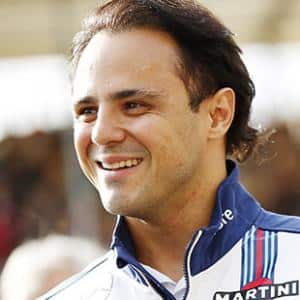Doug Nye: Where does review of past results stop if Massa wins his case?
“Should Massa win there will surely be a review of history-shaping incidents”
Breaking news! Pursuing its retrospective review of all past results the FIA has struck Sir Henry Segrave’s beach-set Land Speed records from its register.
A spokesman explained “The Land Speed record can only be set by land-borne vehicles. On the beaches at Southport and Daytona, Sir Henry’s Sunbeams were clearly seen to deviate from this requirement – having at times been airborne”.
Sir Henry, contacted via ouija board, protested: “When we heard the news, me and the lads was gutted – we’ve been robbed! I mean, where’s the proof? Our legal advisers want the cinematographic evidence.”
Brooklands Outer Circuit lap record holder John Cobb agrees. The RACMSA, following the FIA Formula 1 Commission’s example, has questioned how his Napier-Railton can possibly be credited with the Brooklands perpetual track record when some of the time it wasn’t even in contact with the track? This too must surely go to court!
If retired Brazilian F1 star Felipe Massa wins his much-discussed potential litigation against the FIA decision which saw him lose the 2008 Singapore GP, which he might have won had it not been red-flagged, and which in turn might then have secured for him World Championship points which might thereafter have confirmed him as that year’s World Champion, perhaps, possibly… the entire course of world history would change.
Should Massa’s plea be recognised as lawful, and the redress he seeks be accepted as a legal precedent, one inevitable consequence will surely be a review of previous history-shaping incidents. Michael Schumacher’s ‘inexplicable’ lapse in car control when his Benetton swerved into Damon Hill’s Williams in the 1994 Australian GP will – it is certain – demand re-investigation.
Stirling Moss’s extraordinarily sporting plea on behalf of his deadly rival Mike Hawthorn’s appeal against disqualification in the 1958 Portuguese GP will provide another sure-fire earner for the lawyers (oops… can one use that word in sporting company?).
And of immediate importance, if five-second penalties had not been inappropriately inflicted upon drivers ‘exceeding track limits’ in innumerable recent events – or even due to having lined-up inappropriately within their allocated grid boxes (yes, even at the Goodwood Revival) then uncle George would have been my auntie.
All such possibilities were discussed largely at a happenstance dinner in what we cheerfully know as the Hotel du Grot, near Goodwood. It was Revival time, and the conversation – with former F1 drivers – had actually begun on the pavilion verandah during the Duke’s annual cricket match. As always with committed racers, ask more than one his opinion and no two will ever match. But for me an interesting consensus emerged. Top-level sport of any kind today is intensely litigious. There’s always too much at stake for any potential path towards advantage to be ignored. The motivation in reverse sequence seems to be c) innate hair-trigger competitiveness; b) tremendous responsibility to sponsors; and a) inevitably, money.
“You must have one rule for all, and it must be enforced, every time”
One deep-thinking, intense driver – who is better educated and ferociously brighter than many – is absolutely a legalistic rule-of-law man. “The regulations come from years of experience. Regulations are black and white, no shades of grey. You have either complied, or you have not – no question. Sometimes it’s tough, a penalty can make or break a race, but you must have one hard and fast rule for all, and it must be enforced, every time.”
Another – just as bright but from a different background: “If you don’t consider a grey area, a common-sense area, and trust someone then to have the power to say ‘nope, that’s a penalty too far’, then sport goes out the window. Like the Turn 3 right-hander at the Red Bull Ring. You see someone penalised there for having dived inside at the apex and then sliding into the guy on the outside. Well we all know that taking the inside line inevitably sends you wide on the exit, but it’s the guy on the outside who’s at fault for having left the door open in the first place, so why would you hold on round the outside when inevitably the one who’s just aced into that gap will slide up and T-bone you. It’s then his fault again for putting his car there – it’s obstruction.”
And the third – more than ditto the characteristics above: “There’s no perfect solution. Never has been. Never will be. There’s always too much at stake for penalties not to be applied, then often disputed. Apart from anything else it’s governments – and politicians – who permit motor sport on their territory. And what scares them most is to be accused of ignoring public safety. Speed sports are inherently unsafe, so for the politicians, organisers and promoters, regulations are sacrosanct, to cover their backs; ‘It wasn’t our fault, it was those competitors who broke the rules’.
“But the real problem with solving a penalty dispute, or significantly its ramifications (à la Massa) in court will always be the count back. If there’s no shade of grey, and one judgement changes a result – up to a World title – how many years would someone then demand that such reviews go back?”.
The really nice thing, you know, is to listen to these good blokes talk – and to appreciate they really do still care.
Doug Nye is the UK’s leading motor racing historian and has been writing authoritatively about the sport since the 1960s

